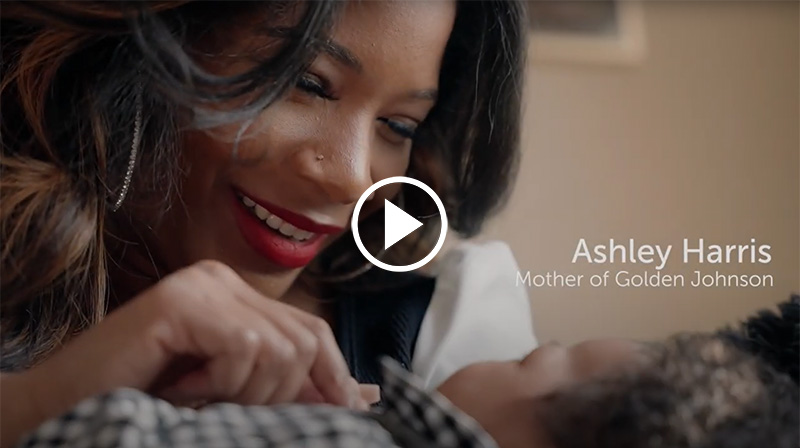Ashley Harris had a plan for the birth of her son. She would have a vaginal delivery in a hospital that offered a high level of maternity care and with which she was familiar. That hospital of choice being Texas Health Presbyterian Hospital Dallas.
As her delivery day drew near, the mom-to-be learned she would need to plan for a cesarean birth instead. The change in direction didn’t really phase Ashley. What did make her pause, however, was the stomach pain she started experiencing several weeks before her due date.
“I started to feel a little strange; I started to feel some sharp pains and then the pain intensified so I was like something isn’t quite right,” Ashley remembers.
She and husband Ron decided to head to the Emergency Department at Texas Health Dallas. Once there, Ron recalls a barrage of nurses coming into Ashley’s room. “They were running back and forth. There was like 10 nurses in the room, and they were saying they couldn’t hear the baby’s pulse.”
Six minutes away from the hospital was Ashley’s obstetrician/gynecologist, Laura Rosenfield, M.D., a physician on the medical staff at Texas Health Dallas. When Rosenfield received a call around midnight from Ashley about the pain she was having and the hospital staff’s concern in monitoring the baby, she knew she needed to act quickly.
Rosenfield arrived at the hospital as nurses and anesthesiologists on the medical staff were preparing Ashley for emergency surgery. In the immediacy of the situation, Ashley says she didn’t really know what was going on, but she was overcome by the kindness of one particular nurse. “She helped me through the entire thing because I was so panicked.”
Once Ashley was put under and surgery got underway, Rosenfield was struck by what she saw — or more importantly — what she didn’t see. The baby wasn’t immediately visible in the abdomen.
“I was able to take a breath, put both hands in and find the baby at the top of the diaphragm where it’s not supposed to be… right underneath the ribs, so we figured out why she was having all those problems at the time,” Rosenfield explains.
What had happened was Ashley’s uterus had ruptured. A uterine rupture occurs when the uterus tears open, leaving the unborn baby without critical protection. The condition is most common during labor and is a life-threatening complication that can cause the baby’s heart rate to slow down and leave it without oxygen. For Ashley and Ron, it was rather a miracle that their baby had survived.
According to Rosenfield, “the fetal mortality in cases of uterine rupture while at the hospital is as high as 5 to 26 percent.” In the Level IV maternity care facility at Texas Health Dallas, the physicians and nurses on staff are equipped with the medical and surgical capabilities to handle the most complex maternal-fetal medical conditions and obstetric complications.
 “Because of where she was, Ashley had access to the highest level of maternal care,” Rosenfield says. “It was fortunate that the uterine rupture was recognized quickly by the staff and that action was taken promptly once a problem was recognized.”
“Because of where she was, Ashley had access to the highest level of maternal care,” Rosenfield says. “It was fortunate that the uterine rupture was recognized quickly by the staff and that action was taken promptly once a problem was recognized.”
Ashley and Ron are grateful for the care their family received and for their ability to watch their son, Golden, grow. “Thank you, Texas Health Dallas, for giving my son a future,” Ron says.
“I couldn’t imagine having Golden anywhere else but Texas Health Dallas,” Ashley adds.
Learn more about delivering your baby at Texas Health Dallas.


